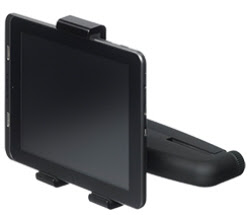Essential PPE To Have on an Oil Rig Site

There are several hazards and risks associated with the oil and gas industry. Because of these potential hazards, workers must wear the appropriate personal protective equipment (PPE) to stay safe on the job. Here are some examples of essential PPE to have on an oil rig site.
Flame-Resistant Clothing
All oil rig workers should have flame-resistant clothing. Workers in the oil industry come into contact with highly flammable gases and vapors and therefore need to wear the proper protective clothing to guard against these hazards. Flash fires are one of the biggest dangers on the job, so you must have clothing that meets highly specific standards to be effective.
Head Protection
Head protection is another essential item oil rig workers will need on the job since falling objects can cause injuries to the head. All classes of hard hats protect against penetration and impact, but class E and C hard hats also protect against electricity. Depending on the kind of electrical hazards on a specific site, a different class of hard hats may be necessary. With that, it’s helpful to find suppliers that strive for industrial supply network excellence to provide all the equipment you need in a timely fashion.
Eye Protection
Having appropriate eye protection when working in the oil field is essential. Suppose your job exposes you to hazards like flying particles, harmful light radiation, molten metal, or acidic liquids, vapors, and gases. In that case, protecting your eyes with the right PPE is necessary. Safety glasses with side shields are an effective option for guarding your eyes against these potential dangers. Face shields are also a common option, but they are less effective than safety glasses or goggles.
Protective Gloves
Protective gloves are another example of essential PPE for oil rig workers. Many occupational hazards on an oil rig require gloves for hand protection. OSHA suggests choosing protective gloves based on specific job duties, environmental conditions, and glove material. Special gloves are available to protect against various hazards like cuts, abrasions, heat, injury, and chemicals. Consider the dangers of your job and select the gloves that best protect against specific risk factors.
Protective Footwear
Of course, you’ll also need to have protective footwear. Depending on your work site, there may be risks of heavy objects falling, electrical hazards, slipping, falling, or tripping. Steel-toed safety boots with slip resistance are a popular footwear option, but if you work with petroleum products and chemicals, you may want neoprene or nitrile boots. Insulated rubber safety boots are an ideal option to protect against electrical shocks.
Now that you know more about the protective equipment you should wear on an oil site, you can gather the appropriate gear for yourself. Safety is a top priority in any industry, so be sure to wear the proper equipment and gear when you work.





